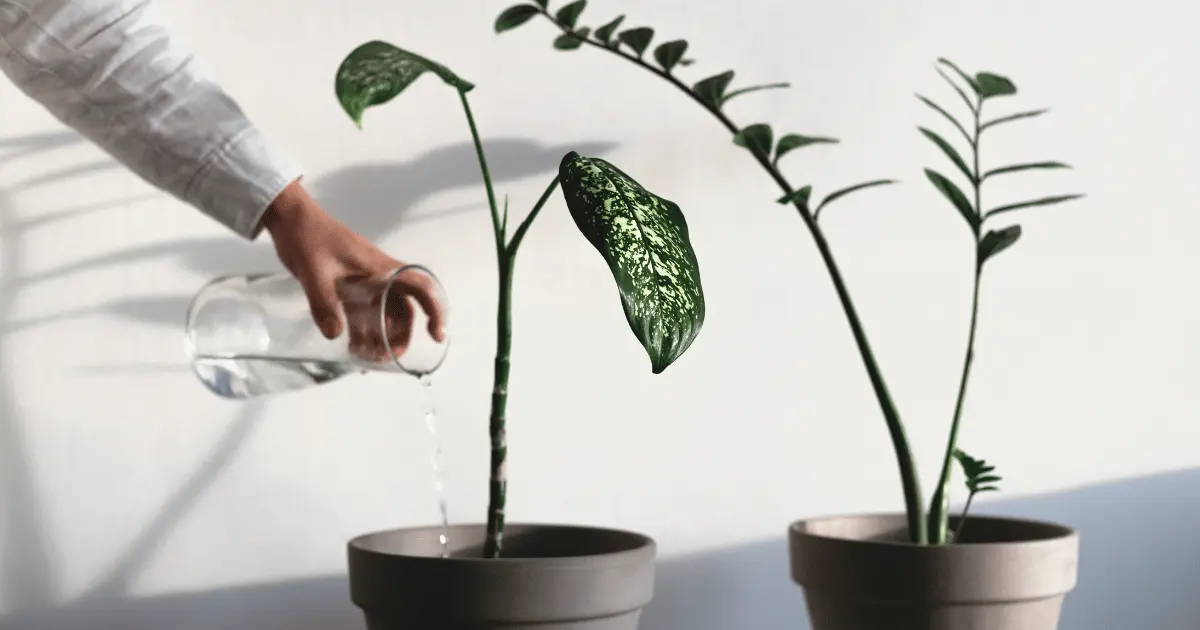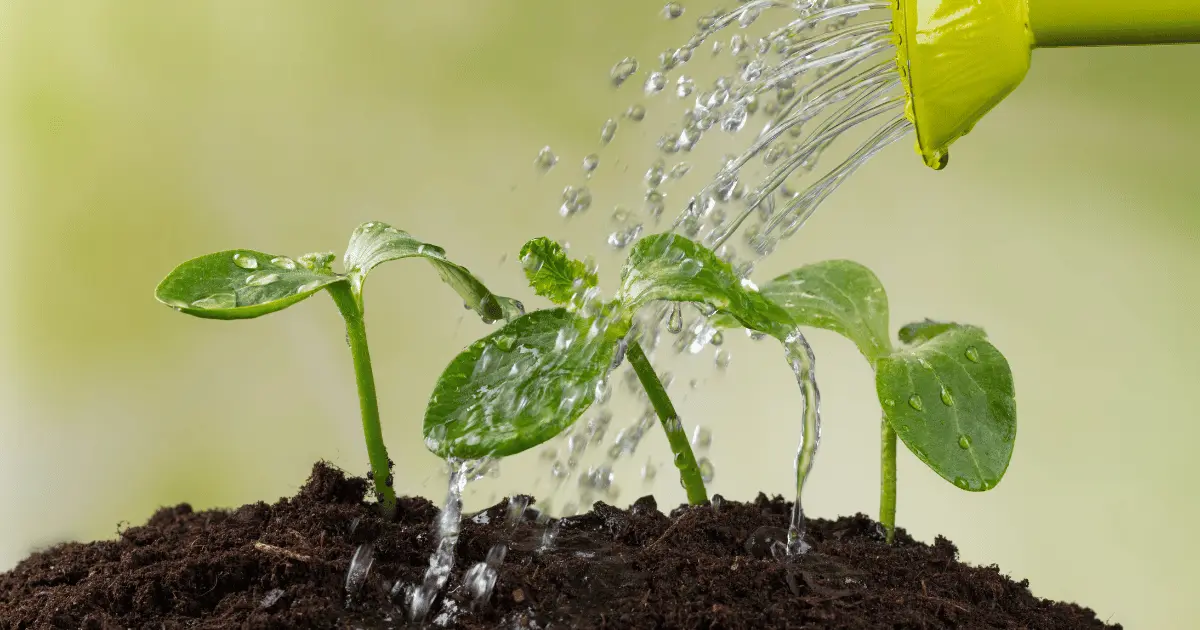As a gardening enthusiast, I’ve learned the hard way that it’s possible to love a plant too much. I’ve overwatered more than a few of my beloved greenery and watched as they wilted and drooped, seemingly beyond salvation.
It’s not just about providing too much water – other factors can contribute to an overwatered plant, such as not replacing the soil regularly or moving the pots around. People often think that overwatering is the only issue, but there are additional maintenance tasks that can also play a role.
But even if your plant looks like a goner, there’s still hope! With a little care and attention, it’s possible to revive an overwatered plant and get it back to looking healthy and vibrant. Here’s what I do when I find myself in this unfortunate situation.
What Are The Signs of an Overwatered Plant?

There are several signs that a plant may be overwatered, including:
Wilting: Overwatered plants will often appear wilted, even when they have been recently watered. This is because the roots are not able to absorb the the excess water, leading to the plant becoming dehydrated.
Yellowing leaves: Overwatered plants may also have yellow or brown leaves, as the excess water can lead to the roots suffocating and the leaves not getting enough nutrients.
Mushy or soft stem: If a plant’s stem feels soft or mushy, it could be a sign of overwatering. This is because the excess water can cause the stem to become saturated and unable to support the weight of the plant.
Foul smell: Overwatered plants may also emit a rotten or sour smell, as the excess water can lead to the growth of bacteria and fungi.
Soggy soil: If the soil around a plant feels constantly soggy or waterlogged, it could be a sign of overwatering. Let the soil dry out between waterings to allow the roots to absorb the water properly.
What Causes Overwatering?

It is preferable to avoid overwatering plant because it is easier to prevent than to try to remedy an overwatered plant. By understanding the causes of overwatering, you can take steps to prevent it from happening.
Too Much Water
One of the most common causes of overwatering is simply using too much water. Pay attention to how much water you are applying to your plants and ensure you are not overdoing it.
Poorly Draining Soil
Overwatering can also occur when the soil doesn’t drain well, causing excess water to build up and saturate the roots. This can be a problem in heavy or compacted soils or containers without drainage holes.
Watering Too Frequently
Watering too frequently is another common cause of overwatering. Different plants have different watering needs, and it’s important to pay attention to the specific requirements of your plants.
Watering at the Wrong Time of Day
Overwatering can also occur if you are watering at the wrong time of day. Watering plants during the heat of the day or when the sun is shining directly on the foliage can cause the water to evaporate before reaching the root zone.
Soil Type
Using the wrong type of soil can also contribute to overwatering. Soils that retain too much moisture can cause excess water to build up and saturate the roots, leading to overwatering. Choosing soil that drains well and allows excess water to drain away from the roots is important.
Sprinkler System
A sprinkler system can also lead to overwatering, as they often apply more water than plants need. Inefficient watering systems can lead to excess water being applied to the soil, causing it to become oversaturated.
Climatic Factors
In some cases, overwatering can be caused by factors beyond your control, such as high humidity or heavy rainfall. In these cases, it’s important to pay attention to the moisture levels in the soil and make adjustments to your watering habits as needed.
How to Fix Overwatered Plants
To save an overwatered houseplant, you need to act quickly before it dies completely. If you have just noticed that the plant is wilting, you still have a chance to revive it. While some plants may not be able to be saved, it is worth attempting to rescue the plant.
Identify the Symptoms of Overwatering
The first step in reviving an overwatered plant is accurately identifying the problem. Signs of overwatering include yellowing leaves, wilting, and a soggy or spongy feeling when you touch the soil. These symptoms can also be caused by other issues, such as underwatering or a lack of sunlight, so it’s important to observe the plant carefully and rule out other potential causes.
Stop Watering the Plant
Once you have determined that the plant is overwatered, you should stop watering it. This may seem counterintuitive, but it’s important to give the plant a chance to dry out and allow the excess water to drain away. If the soil is very soggy, you may need to remove the plant from its pot and gently shake off the excess soil.
Allow The Soil To Dry Completely
If you have overwatered your plant and it is showing some signs of distress, there are several steps you can take to try to save it. One of the easiest and most effective solutions is to stop watering the plant and allow the soil to dry out completely. This gives the plant time and space to recover and allows oxygen to reach the roots again, which can help the plant recover. If the plant is not yet dying but is showing some symptoms, simply changing your watering schedule may be enough to bring the plant back to health.
Repot Your Plant in New Soil
If allowing the soil to dry out is not sufficient to save your overwatered plant and it is showing severe symptoms, you may need to repot it in new, dry soil. When repotting, it is important to remove all of the wet soil from around the roots and check for root rot. If any roots are dead, they should be trimmed away to leave only healthy roots. These healthy roots will be able to provide nutrients to the plant, while dead roots can lead to root rot and attract pests.
After repotting the plant in new soil, it is important to keep the soil dry for a few days before watering it lightly. A pot with a drainage hole can help prevent excess water from accumulating. It is a good idea to check on the plant regularly to ensure it is recovering properly. If the plant does not improve after a week, it may be necessary to check for root rot again and remove any dead roots.
Repot Your Plant in Leca (Expanded Clay Pebbles)
Leca is a medium that helps you to water your plants in a controlled way without the risk of overwatering. It is not organic like soil, so it does not provide plants with nutrients, but it is effective at regulating the amount of water in the pot and only providing plants with the water they need. If you have trouble watering your plants effectively in soil or are prone to overwatering, Leca may be a good solution for you. To use Leca for an overwatered plant, you can try the following steps:
- Remove the plant from its pot and gently loosen the roots to allow excess water to drain away.
- Mix Leca into the soil at a ratio of about 25% Leca to 75% soil. This will help to improve drainage and allow excess moisture to escape from the soil more easily.
- Repot the plant using the amended soil mix, and make sure to use a pot with good drainage holes to prevent future overwatering.
- Allow the soil to dry out somewhat before watering the plant again, and check the moisture level regularly to avoid overwatering in the future.
Propagate Your Plant
If you’ve overwatered your plant and it has suffered significant damage, including the death of some leaves, the only way to try and save it is by propagating it. This involves creating new plants from the existing ones, giving you a second chance to care for them. While this process does not directly save the original plant, it allows you to continue growing new plants.
Propagation is often easy with succulents, as you can propagate them by planting their leaves in soil. Still, it is possible for many other types of plants, even if they have been damaged by overwatering.
One example is the sansevieria, which can be propagated by cutting its leaves, letting them dry for a couple of days, and then planting them in soil. This will produce new plants in a few months. If you need help propagating a different type of plant, you can check out our other guides on the subject.
Adjust Your Watering Habits
Once the plant has recovered, it’s important to adjust your watering habits to prevent future overwatering. A general rule of thumb is to water plants deeply but infrequently, allowing the soil to dry out slightly between waterings. The watering frequency will depend on the plant type, the pot size, and the weather conditions. Using a moisture meter or sticking your finger into the soil to check the moisture level before watering is also a good idea.
There are several options for saving an overwatered plant. You can let the soil dry out, repot the plant in new soil or a soil-less medium such as leca, or propagate the plant to create a new one. While it is always best to prevent overwatering in the first place, it is possible to successfully revive an overwatered plant with the right approach.
